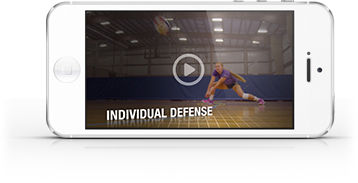
Jaimee Rindy | Middle blocker at Coe College, juniors’ club coach
For indoor volleyball players, summer is a sort of dead time. It’s the season for beach volleyball and doubles tournaments, but the indoor game comes to a halt – or at least slows down considerably.
During this time coaches have little control over when, where, and how their players are getting their reps, which can be stressful and frustrating. And things get even more frustrating when players come back from various camps and summer sessions where they’re coached by lots of different coaches, all teaching different methods. It can be challenging for a player when they feel they are being asked to change things based on the coach or program.
So what can you do at the beginning of the fall season to help players get back in the rhythm of your program? Here are a few tips:
Break it down
Sometimes we as coaches have a habit of explaining things using terms that players may not yet understand. For example, I was recently working with some young defensive players and I was using the phrase “outside in,” though I never stopped to make sure that the players knew that the phrase meant to begin their defensive positions on the perimeter of the court and move in as necessary. To me the phrasing was obvious, but some of these players had never heard of the concept before, so even though I was giving them instructions, they had no way to actually follow them. Making sure all players in the gym, new or returning, fully comprehend your instructions is key to helping them get the most out of your practices.
Explain your coaching
If you’re teaching a skill or drill, it’s important to explain exactly what is meant to be gained from it. Explain why you are teaching one method over another. This helps give them clarity if they have been taught something different by another coach, and it also helps them focus on the specific task, which will make for better-executed drills.
Each player is an individual
It’s important to remember that each of your players is an individual, and different people respond to different methods. Sometimes even the slightest variation in the way a skill is explained can mean the difference between a player fully comprehending the concept and having to guess what it is that you expect from them. Encourage your players to be honest with you. If they don’t get it, they need to let you know so you can explain it in a way that helps them understand.
Playing is the best coach
Don’t fret about how your players may be losing ground over the summer. Regardless of which camp they’re going to or who is coaching them, if your players are getting reps, chances are they’re getting better. Especially for young players, any time on the court is time spent learning the game, and every touch on the ball is a chance to get more comfortable with the sport.
For a coach, summer can often be more taxing than relaxing. Luckily, fall season is just around the corner, and it only takes a few practices for the routine to settle in again. Have faith in your players. If they have a real desire to improve, they’ll seek out the best opportunities to play and grow their skills.
Jaimee Rindy is a senior middle blocker at Coe College in Cedar Rapids, Iowa.



